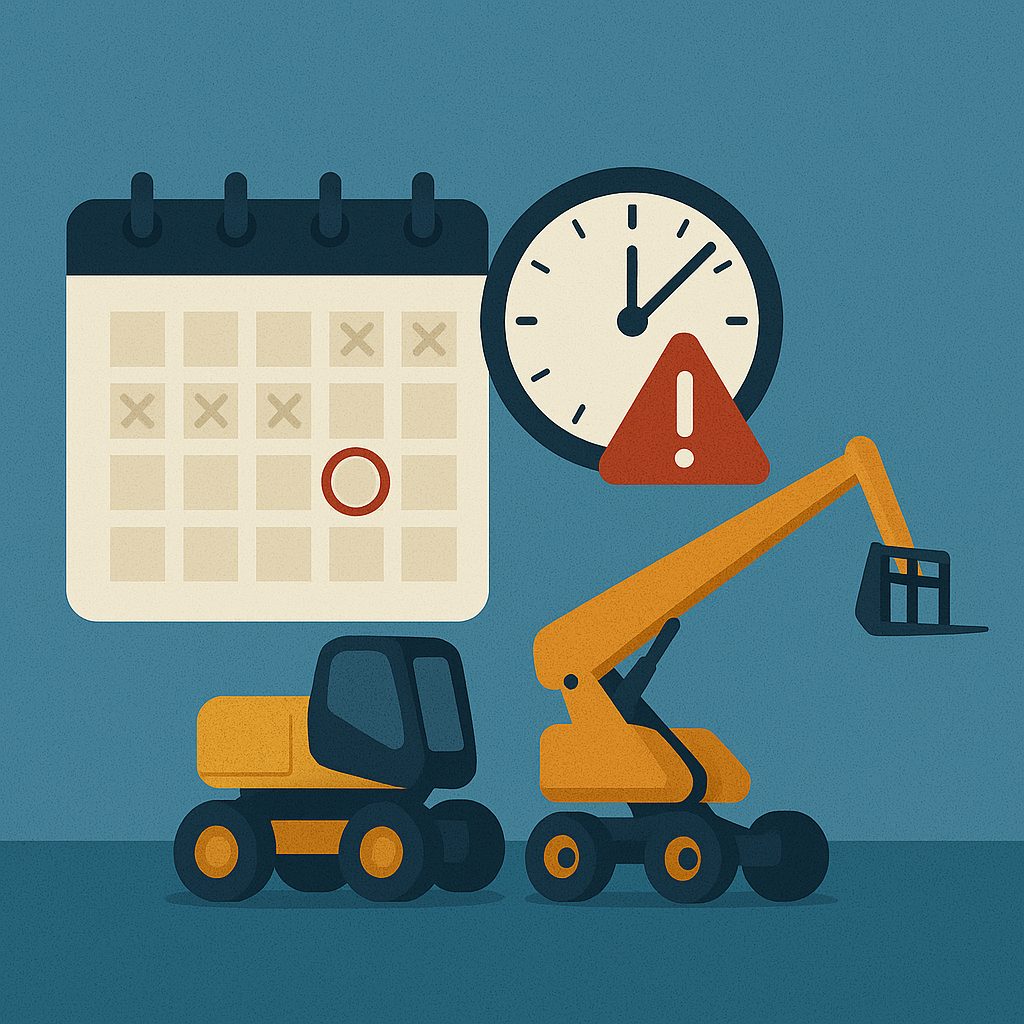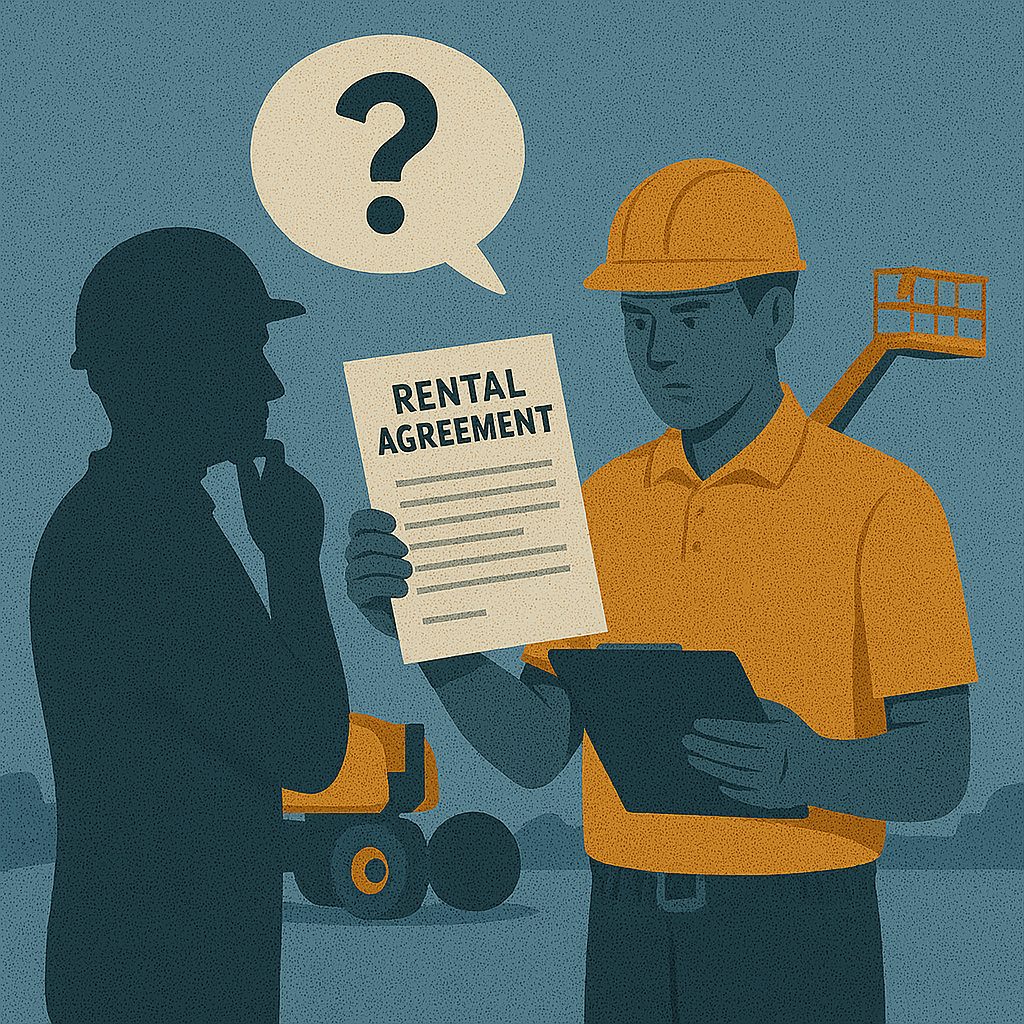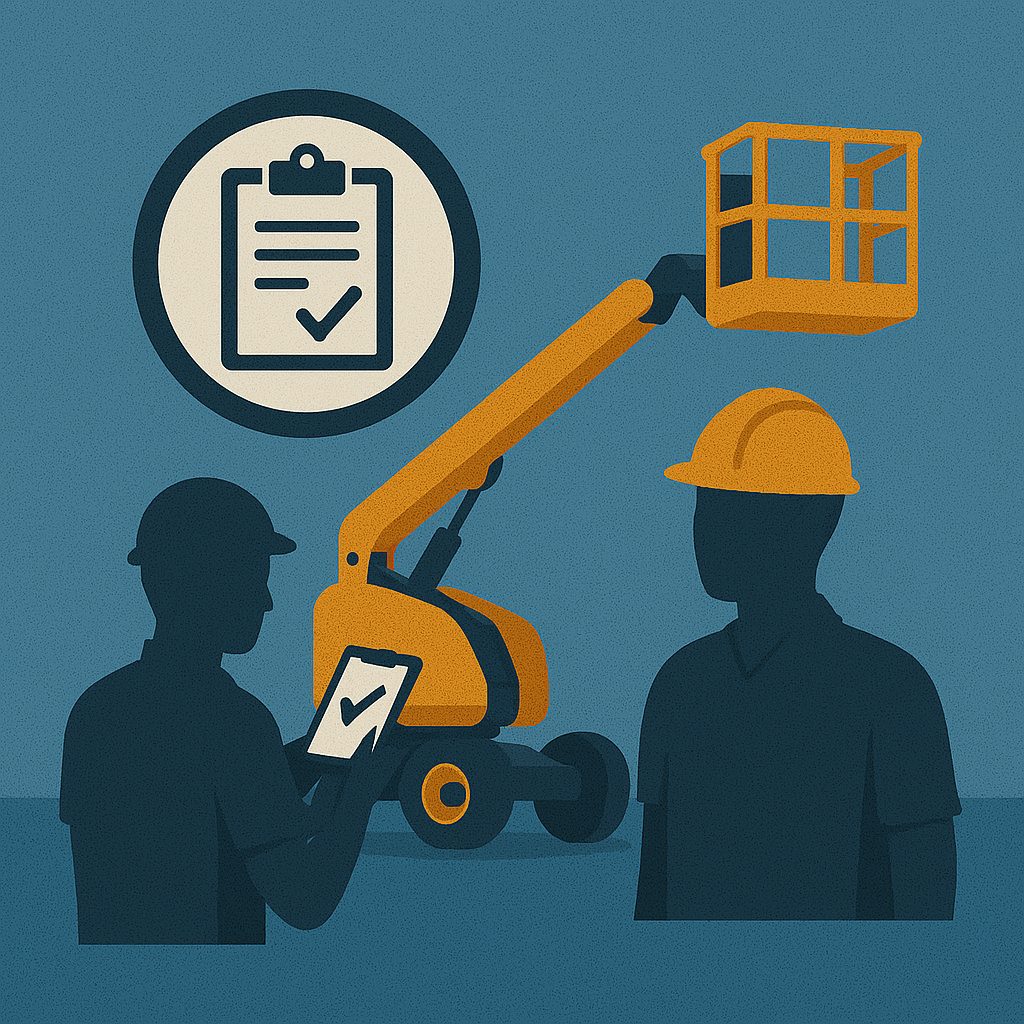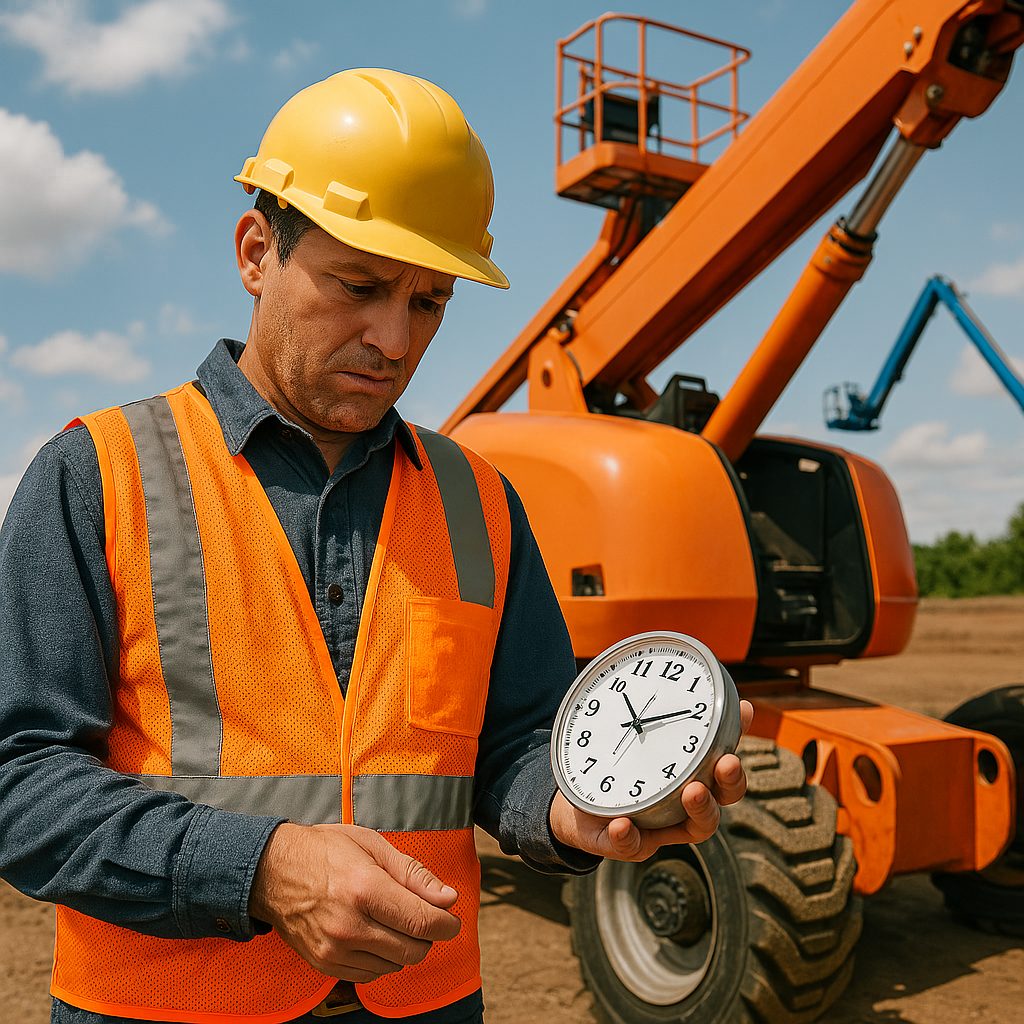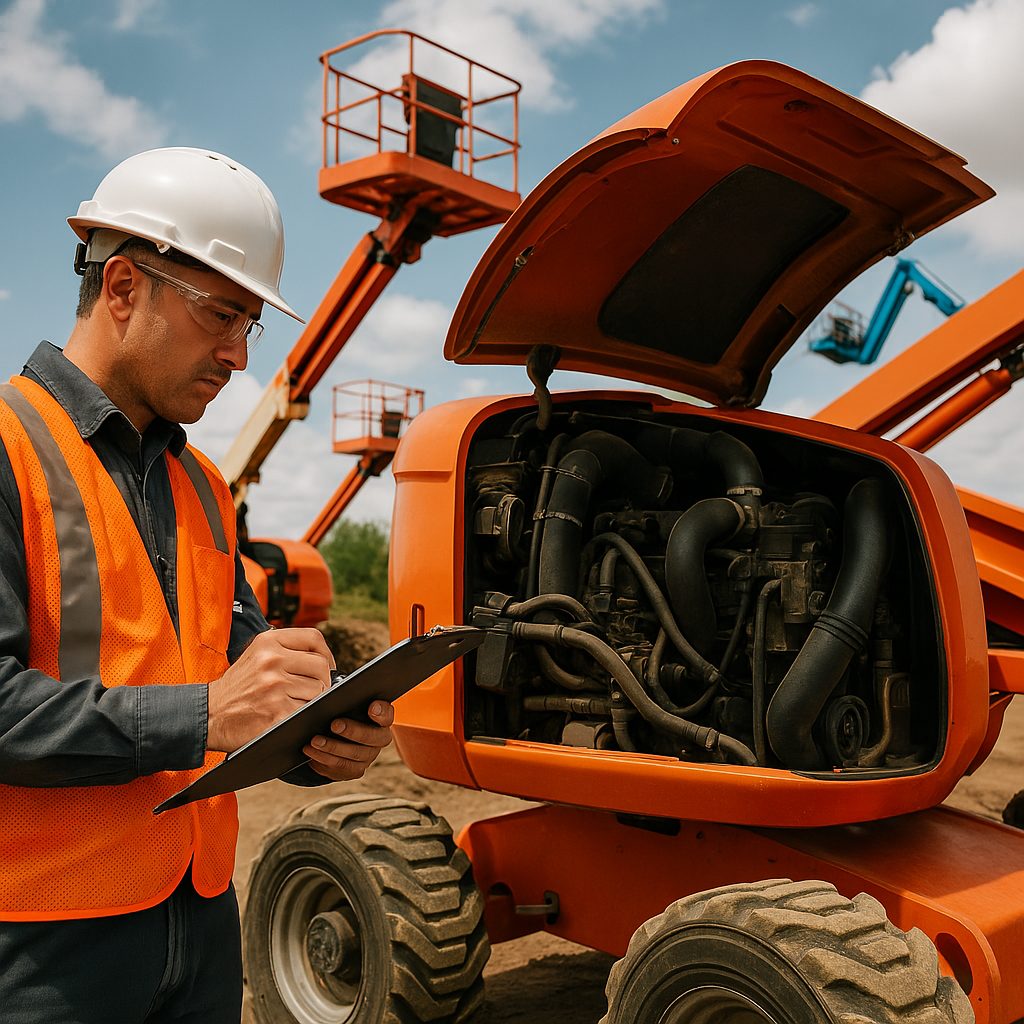Tuesday, April 15th, 2025
How to Avoid Common Equipment Rental Mistakes

Spring and summer are crunch time in construction. Crews are on tight timelines, and one small misstep in your rental process can throw an entire job off schedule.
With major investments pouring into public and private infrastructure, the labour market is stretched thin and equipment demand is through the roof. The Greater Toronto Area is leading the charge, making Ontario one of the busiest and most competitive construction markets in the country.
In this blog, we’re breaking down the eight most common rental mistakes we see—and how to steer clear of them—so your project stays on track and stress-free.
Mistake #1: Booking Equipment at the Last Minute
Procrastinating is a fast track to delays. In peak season, the demand for lifts skyrockets, especially for boom lifts, scissor lifts, and telehandlers.
The fix: Book early. CanLift invests in fleet expansion ahead of peak season so availability is never an issue, recently bringing in a major shipment of JLG booms to boost capacity. Behind the scenes, our shop team preps and certifies each machine early so they’re rental-ready when calls come in, whether it’s a Skyjack rental in Toronto or a Genie rental in Niagara Falls.
Mistake #2: Guessing What Equipment You Need
Not all lifts are created equal. If your crew’s waiting on-site for a lift that doesn’t reach high enough or can’t navigate the terrain, you’ve just lost a day. Guessing based on previous jobs or assuming “any boom will do” leads to delays, call-backs, and wasted rentals.
The fix: Call an equipment pro. CanLift’s veteran outside sales team is hands-on. If you’re unsure of what you need, we’ll come to your site, assess your project, and recommend the right equipment. We eliminate the guesswork and send the machine that’s made for the job.
Mistake #3: Skimming the Fine Print
Rental contracts can be dense, but ignoring key clauses like damage waivers or insurance can cost you big.
The fix: Read the contract, and ask questions before signing. One of the most misunderstood pieces of any rental agreement is insurance. Damage waivers cover small cosmetic fixes (think scratches or minor wear), but not total loss or major damage. Every renter still needs to have their own insurance policy in place. We walk customers through the full agreement and explain what’s covered, what’s not, and what to expect if something goes wrong.
Mistake #4: Failing to Prep the Site for Delivery
An unclear address or a locked gate can stall delivery and delay your start time by hours.
The fix: Double-check the delivery info. CanLift always asks for a detailed drop-off address (right down to East vs. West), a site contact with a working number, and any access details. Got a tight site? Let us know where to leave the lift so we’re not blocking another trade or parking where your slab pour is happening.
Mistake #5: Skipping the Arrival Inspection
If you don’t document equipment condition when it arrives, you could be held responsible for damage you didn’t cause.
The fix: When your unit is delivered, do a full walkaround with the driver or your crew lead. Take photos of any wear, check all functions, and call someone right away if something’s off. That documentation protects both sides. CanLift’s fleet is maintained by factory-trained techs, and each unit is inspected before leaving the yard, but you should still do your own check when it hits your site.
Mistake #6: Underestimating Rental Time
We’ve all had projects run longer than expected. But what happens if you only book a scissor lift for a day and end up needing it for a week?
The fix: Build in buffer time. CanLift’s rental options are flexible (daily, weekly, monthly), and we’re happy to adjust if your project shifts—but the earlier we know, the better we can support you. Communicate changes early to avoid stress.
Mistake #7: Overlooking Maintenance and Support
If a machine breaks down mid-job, you need to know who’s fixing it and how fast.
The fix: Ask these questions before the rental starts. CanLift offers 24/7 on-site and in-shop service. Our in-house techs are factory trained on every machine we carry, and we take support seriously—because downtime isn’t just inconvenient, it’s expensive.
Mistake #8: Ignoring Operator Training and Safety
Sending untrained workers up in an aerial lift is a liability you don’t want.
The fix: Only trained, certified workers should use aerial work platforms. CanLift supplies a daily operator checklist with every rental, and we encourage your team to run through it before every shift. Our lifts also undergo quarterly inspections and a full pre-delivery check to ensure they’re ready to go before they leave the yard.
Real Results, When It Counts Most
A CanLift customer came to us with a last-minute emergency job and just 48 hours to complete it. Site conditions were tricky and required a rotating lineup of boom lifts, scissor lifts, and a telehandler, delivered in waves to match trade schedules. Other rental providers couldn’t deliver on time. We could.
We coordinated logistics with our freight partner, pulled from our prepped stock, and delivered every machine on time. The client stayed on schedule. No idle crews, no lost hours.
Need reliable rentals this season? If you’re tired of surprises, vague agreements, or wondering if your call will get answered, it’s time to work with a rental company that operates like a real extension of your team.



